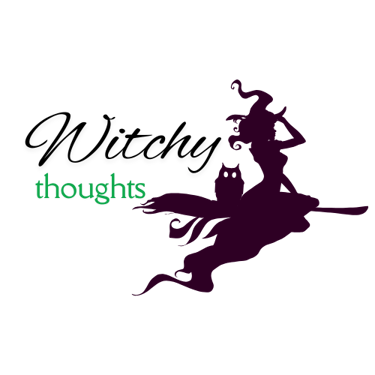FLYING headfirst into All THINGS MAGICAL with a sense of curiosity, humor, and just a touch of skepticism
Origins of the Pentagram (Or, How a Star Got So Much Drama)
The pentagram isn’t just pretty—it has brains too. Let's dive into the history and modern use of the mysterious symbol.
Julie Gish Norris
1/11/20253 min read


The pentagram, that five-pointed star you’ve probably seen everywhere from notebooks to witchy Pinterest boards, has been around forever—like 3500 BCE kind of forever. It first popped up in Mesopotamia, where it wasn’t about black magic or cults but harmony and balance. People loved slapping it on everything as a decorative motif, a sort of ancient "live, laugh, love" symbol. (Source: Encyclopedia Britannica.)
Turns out, the pentagram wasn’t just pretty—it had brains too. The Greeks, especially Pythagoras (the triangle guy), were all over this star. They geeked out about its mathematical properties and golden ratio vibes, calling it the ultimate symbol of perfection. Pythagoras even said it stood for human marriage and balance — because apparently, geometry is romantic. (Source: "Pythagoras and His Theorems.")
As time went on, the pentagram got its moment in religion. Early Christians saw it as a nod to the five wounds of Christ, making it a badge of faith and protection. Meanwhile, other ancient religions also saw the star as a protective emblem. Everyone wanted a piece of this versatile symbol. (Source: Christianity.com.)
Then came medieval times, and things got a little weird. Alchemists and occultists latched onto the pentagram, swearing it had mystical powers. Cue the association with witchcraft, which — spoiler alert — was mostly misunderstood fearmongering. And just like that, the pentagram’s reputation started its dramatic shift. (Source: History Channel.)
From ancient Mesopotamia to Greek equations and medieval mysticism, the pentagram’s glow-up is proof that symbols are never just one thing. It’s harmony, divinity, and a little bit of “Wait, are you a witch?” all rolled into one.
Symbolic Interpretations of the Pentagram (AKA, What Do These Five Points Even Mean?)
The pentagram isn’t just a pretty shape — it’s loaded with meaning. Each of the five points represents a classical element: earth, air, fire, water, and spirit. It’s the universe’s way of saying, “Everything is connected, so chill out.” When you look at it as a whole, it’s all about balance and unity, like a cosmic group hug. (Source: PaganPath.com.)
In Wicca, the pentagram is a big deal. Picture it as the ultimate protection badge, worn with pride during rituals. The upward-pointing star means the spirit rules over the elements, meaning, "The vibes are immaculate." It’s about honoring nature, spirituality, and the magic that ties all together. (Source: "The Spiral Dance" by Starhawk.)
On the flip side, Christianity took a sharp left turn with the pentagram, especially when it’s flipped upside down. Suddenly, it went from symbolizing unity to “Hey, is this thing evil?” Blame it on witch hunts and some overzealous folks labeling anything Pagan as heretical.
So, the pentagram is like that friend who’s misunderstood in some circles but adored in others. It’s a symbol of protection, balance, and spirituality—or a reason to clutch your pearls, depending on who you ask.
The Pentagram and Witchcraft: A Cultural Glow-Down (and Back Up Again)
Once upon a time, the pentagram was all about good vibes and protection. Then the 15th to 18th centuries rolled around with their witch hunts, and things went south. As fear of witches grew, people decided the pentagram wasn’t a magical BFF but a dark, evil mark. Cue the witch trials.
The witch hysteria wasn’t exactly rational (understatement of the century). The pentagram got caught in the crossfire as a symbol tied to anything "unholy." Suddenly, this once-protective star was painted as a sign of devil worship, all thanks to societal fears and scapegoating.
Fast forward to Gothic novels and creepy folklore, and the pentagram was now the star (pun intended) of sinister stories. But don’t worry — modern times have given it a redemption arc, with Pagans and Wiccans reclaiming it as a positive symbol of spirituality and harmony.
Modern Interpretations and the Pentagram’s Glow-Up
Today, the pentagram is living its best life. Pagans and Wiccans have reclaimed it as a symbol of empowerment, connecting it to earth, air, fire, water, and spirit — a nature-lover’s dream. It’s about unity, balance, and good vibes only. (Source: "The Element Encyclopedia of Witchcraft.")
In art, the pentagram pops up everywhere — from paintings to edgy jewelry. It’s not just spiritual; it’s stylish. Fashion designers and artists love its geometric flair, and let’s be real—it’s a star for a reason.
In pop culture, the pentagram often symbolizes magic and mystery. Whether it’s on TV, in books, or in movies, it’s a shorthand for "something mystical is going down." This modern love for the pentagram proves that it’s more than just a symbol — it’s a vibe.
So next time you see a pentagram, don’t overthink it. Whether it’s on a necklace, in a movie, or carved into a tree, it’s just a five-pointed reminder that everything’s connected—and that drama is inevitable when you’re this iconic.
If you’ve got tips, tricks, or just a good witchy joke, contact me using the form below. I’ll be over here, trying not to set anything on fire (maybe).
Blessed be, or as I like to say, "Stay witchy, my friends!"
Get in touch
STAY IN TOUCH
© 2025. All rights reserved.
WEBSITE POLICIES
Disclaimer:
The content on this blog is for informational and entertainment purposes only. I am not a medical professional, legal advisor, or any other kind of licensed expert. The practices, products, and tips shared here are based on personal experiences and should not be taken as a substitute for professional medical, legal, or financial advice. Always consult a qualified professional for guidance on health, legal, or other serious matters. Your journey is uniquely yours—trust your intuition and make decisions that feel right for you.
